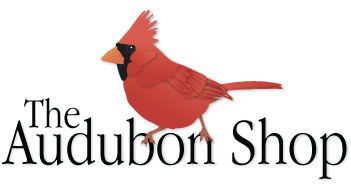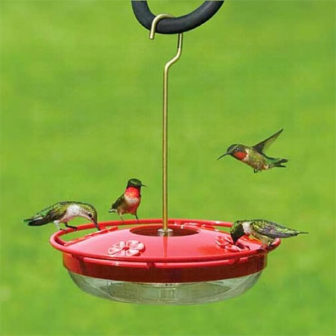Where are the hummingbirds?
In early June we start fielding phone calls at the shop about hummingbirds’ arrival here in CT, as in:
“Where are the hummingbirds?” We are often so enthusiastic about seeing them again – a signal in April that winter is finally over! People recall seeing swarms of them at flowers and nectar feeders during the previous late summer, and they forget that these tiny gems make their long migration north for one reason…to nest and rear young. That is the only reason they are here, and they set about picking a good territory right away.
Is there a natural reason why hummingbirds are showing up only occasionally at feeders from May through early July? We advocate providing nectar in feeders, and we put ours out in late April to give them a little needed energy after a long journey…but it’s time to look at the BIG Picture.
Here in the east, we have just one hummingbird that migrates north from its wintering grounds in Central America and Mexico every year, the Ruby-throated Hummingbird. The male has that distinctive red “gorget”, or a sort of bib of red, that can vary from dark magenta to bright crimson in the light. The male can flash that color to intimidate other males, or even to scare a female off of a nectar source. His back is a sort of olive green, and his outer wings show darker feathers. The males arrive first, usually, and often in late April or early May.
The female Ruby-throat is all green, with a white/off-white chin and belly. She will arrive and begin to scope out suitable territory, soon after the male. During the nesting season, which extends from the second week in May through June and into July, your local hummingbirds live and defend territories in the best hummingbird nesting habitat they can find.
Hummers prefer to nest in forested or wooded areas and in woodland openings. They like moist areas near streams where there are lots of insects. Insects and other small invertebrates make up 50 percent of the hummer’s daily diet and up to 75 percent during the nesting season. It’s then that they need protein-rich insect food to feed their growing babies. (They do not feed their young nectar).
Take a look around your yard and neighborhood for more clues as to whether your immediate habitat is attractive to hummingbirds.
*Think insects! A habitat that does not offer a variety of insects, will not support hummingbirds. Stop spraying your yard for mosquitoes – there are other ways to control these annoying insects.

The attractiveness to hummers of suitable areas in terms of flowering plants and the presence of small insects is controlled by humans. That’s you and me. And, we do have choices!
There is quite an active push to learn what plants are supposed to be in your particular zone, climate, and habitat. Many neighbors are turning yards of high maintenance grass into lower maintenance and abundantly attractive habitats for insects and birds.
The advantage to adding natives goes deep. They may need less care beyond the first couple of years, but you must learn what kind of soil and light they will thrive in. Visit your local native plant nursery or garden center for appropriate plants for your area. Find out which plants will tolerate each other.
Why natives? Natives will attract suitable insects, birds and animals, and since they are found in your climate, they are more likely to thrive!
This can be a 5 year plan, it does not have to be achieved overnight. Set realistic goals, and enjoy learning about your native flora.

